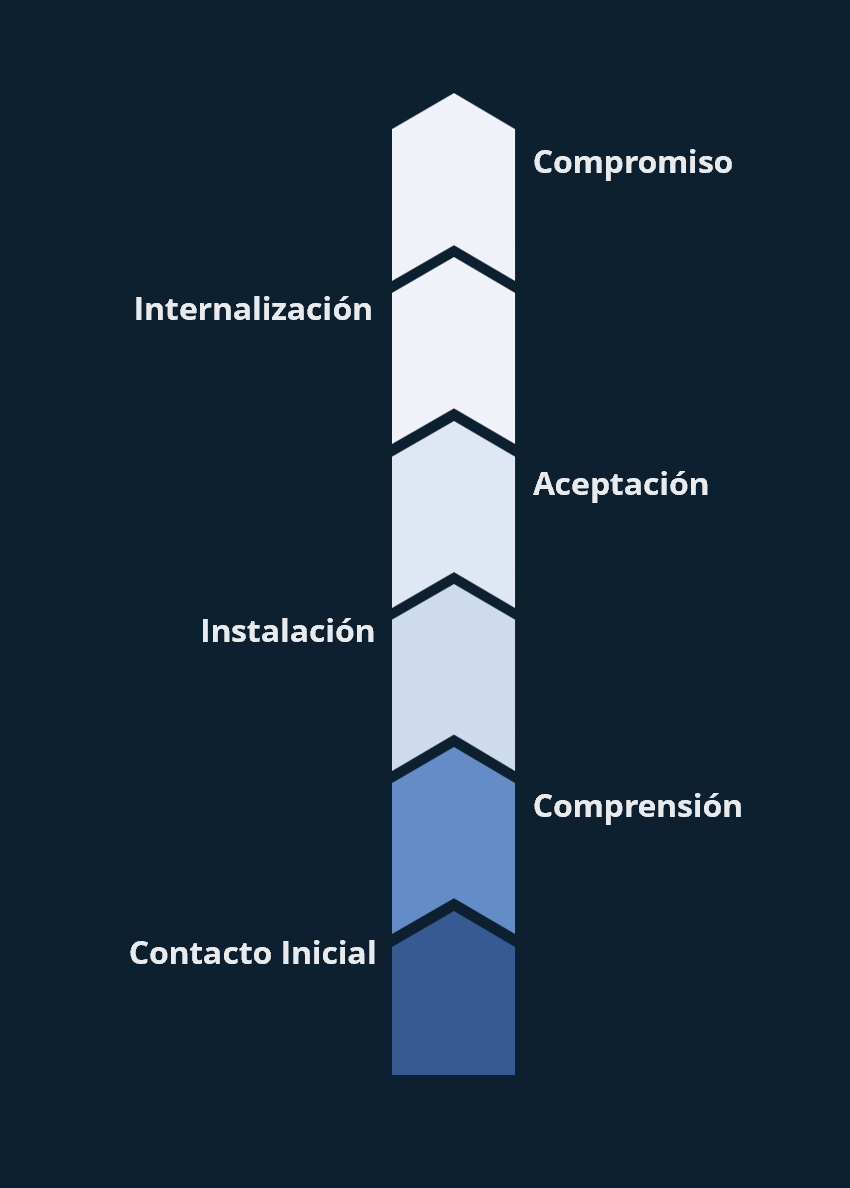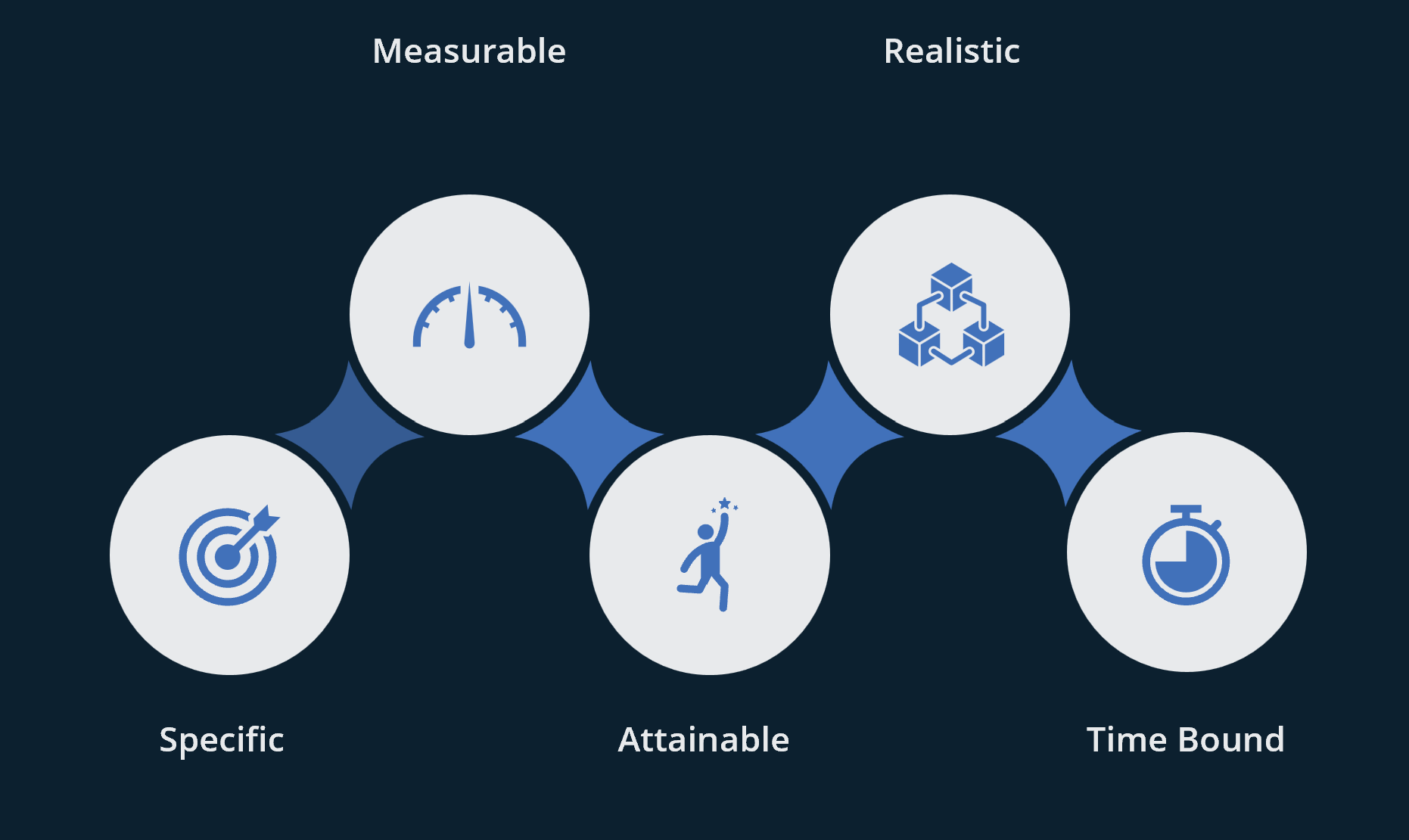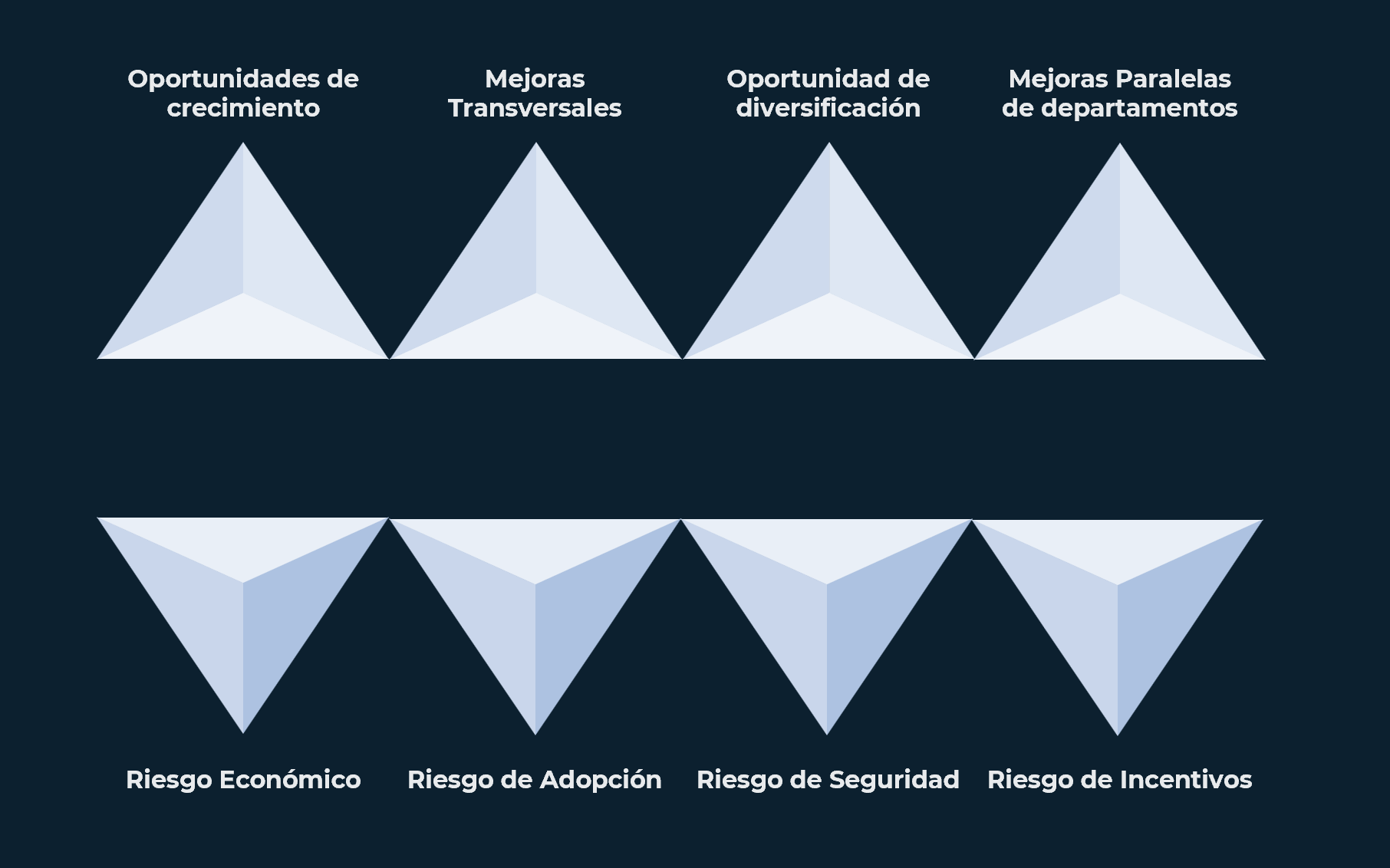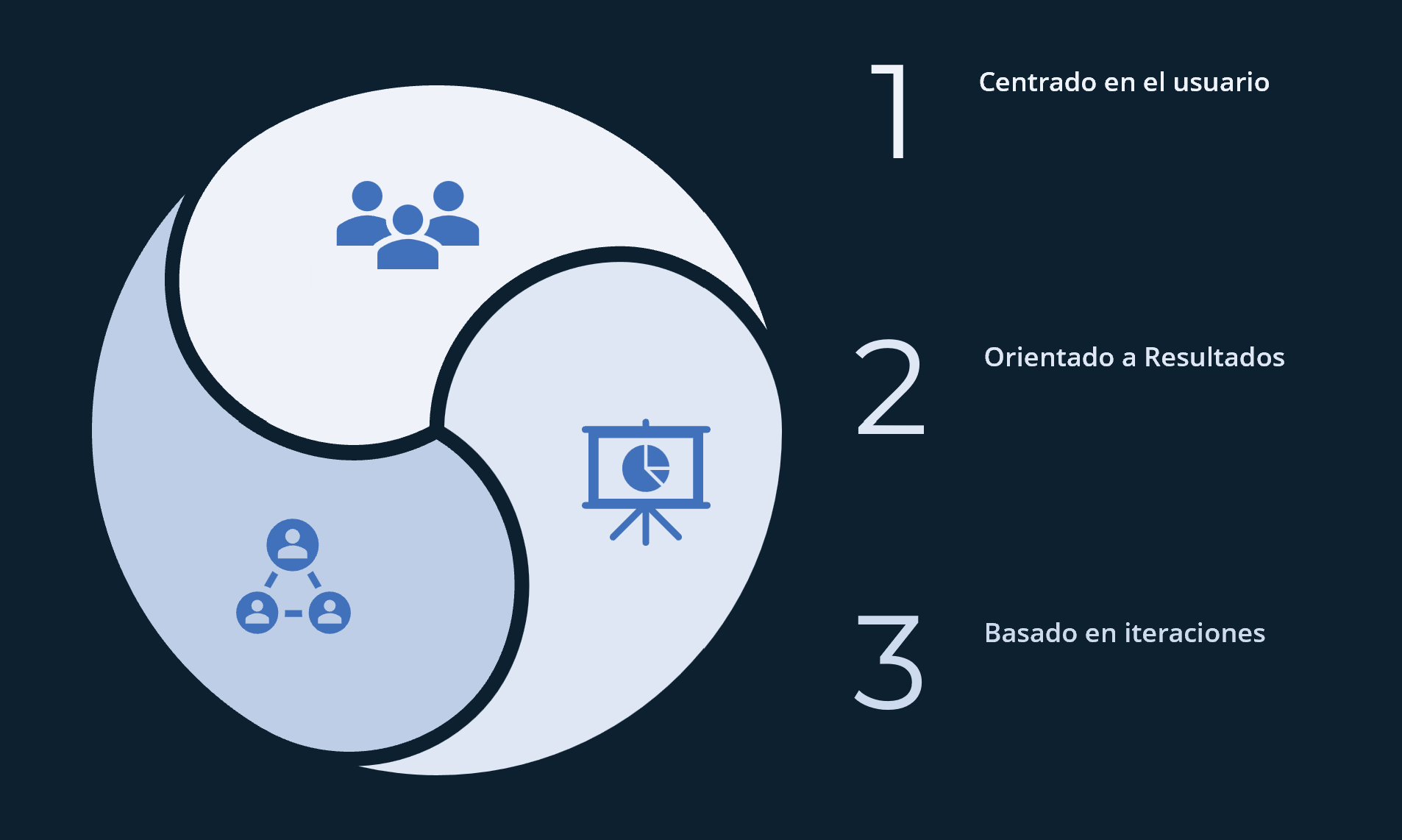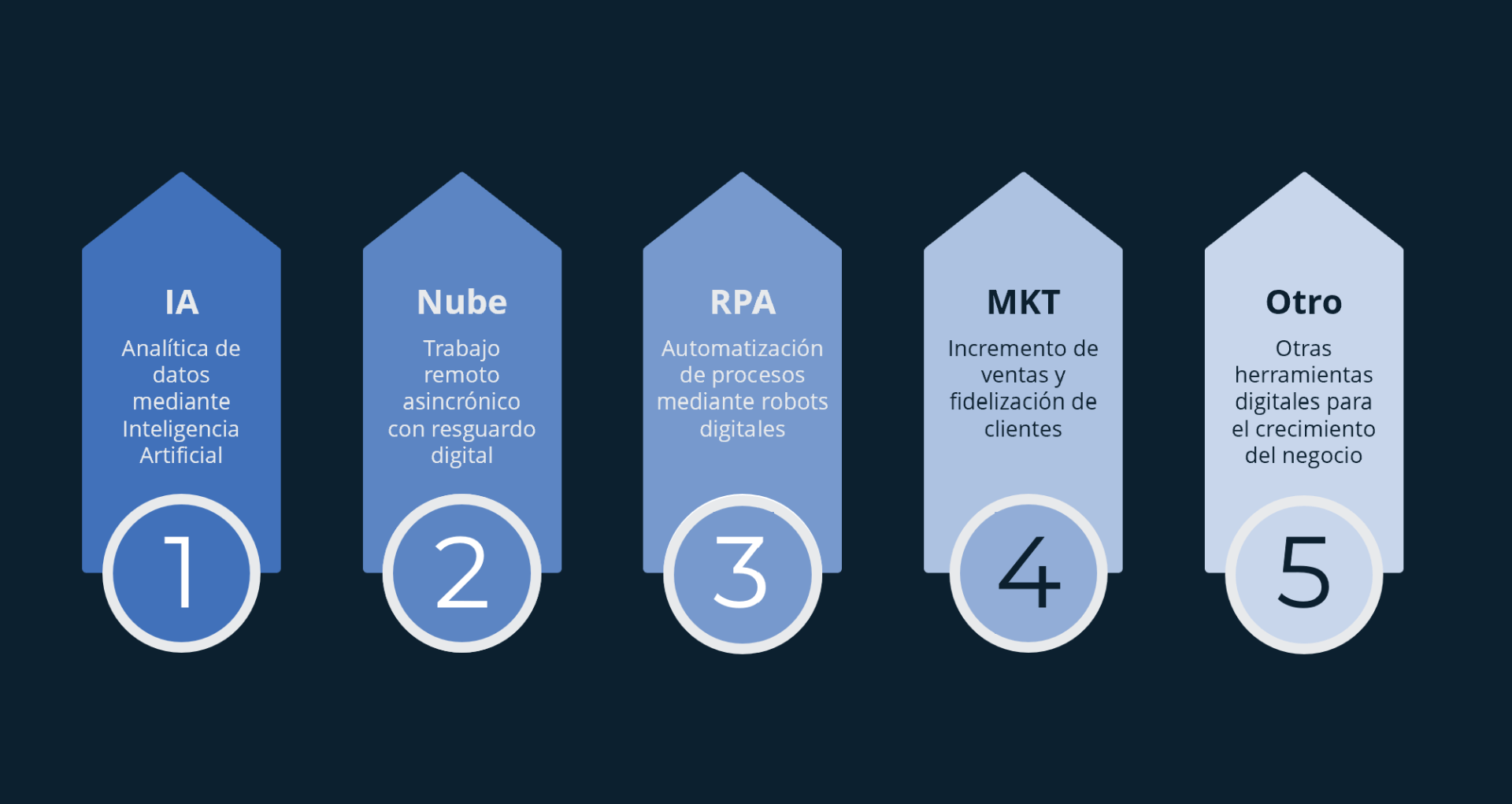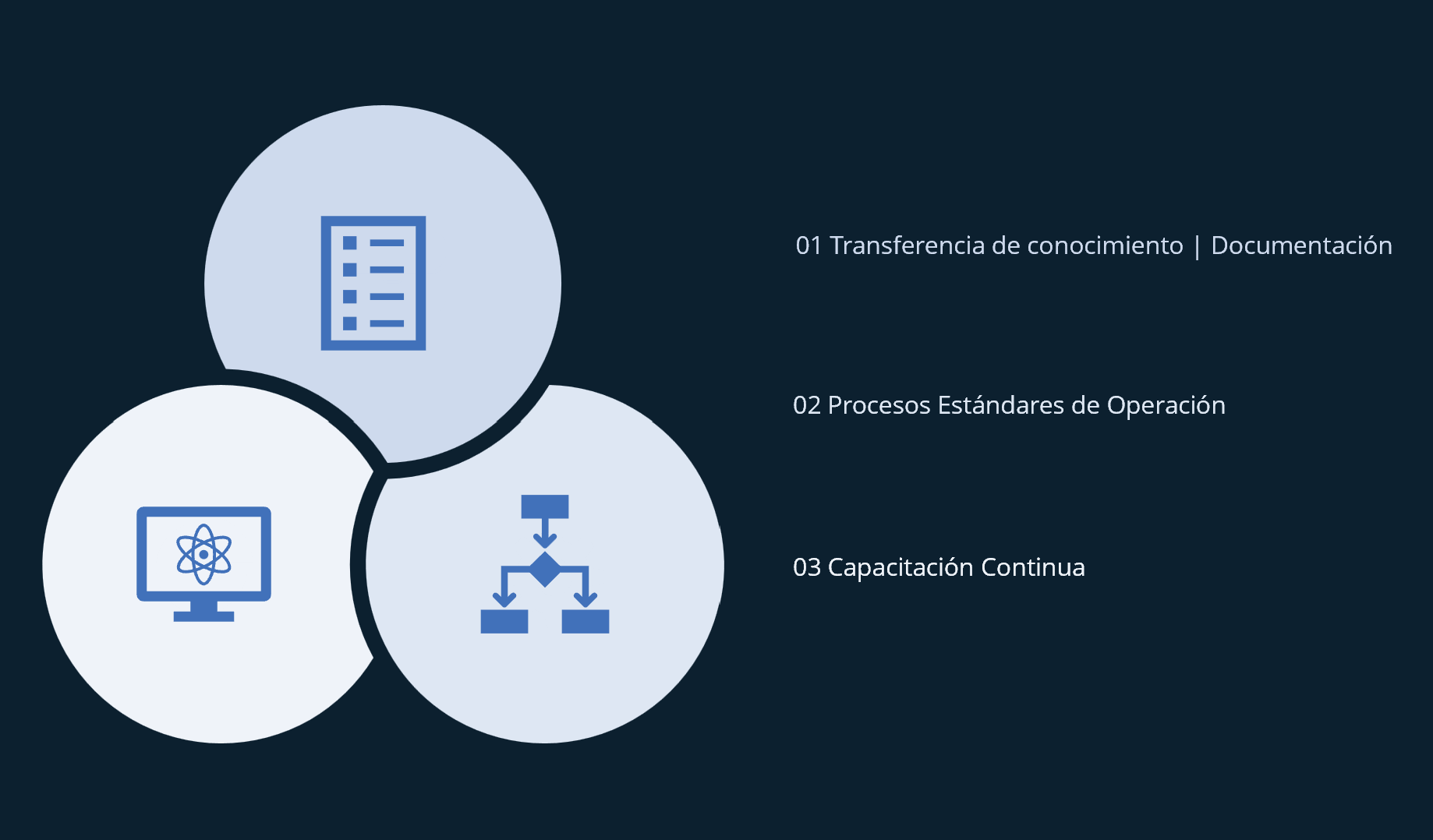Digital Transformation Consulting
Development of Digital Transformation Roadmap

Digital Transformation
How to develop a Digital Transformation initiative?
It consists of successfully managing the transition from a present situation to a future one in which there is a promise of improvement.
initial contact
- Identify what you want to achieve from a financial, operational and business point of view and ensure that it is shared by stakeholders
Comprehension
- Ensure that everyone has understood where the organization is headed and what results are expected from this change.
installation
- Design the pillars on which the change will be built, allowing us to see in a more practical and real way how the evolution will materialize
Acceptance
- Development plans for new processes and services, where it is essential to involve stakeholders
Internalization
- Implementation period of the modifications and convincing of their positive effects at the individual level (people) and globally (the entire company)
Commitment
- Have the commitment that it will provide the means and resources so that they can develop properly
Identify what specific goals you want to achieve. Among them may be the following
Get the attention of digital consumers.
- Improve the customer experience.Create a competitive advantage for the organization.Promote the culture of innovation within the organization.Improve internal collaboration.Improve process efficiency.Deepen data analysis (Big Data).Build customer loyalty customers.
The objective is designed under the SMART concept to be able to identify the progress that has been made on the objectives to be achieved. Under this scheme we can visualize the fulfillment and progress of the project on a monthly basis.
The risk and opportunity assessment determines if there are transversal or parallel projects that can be developed due to the nature of the project. As well as evaluating the possible economic risks, safety risks, rejection of change and unwanted behaviors that may arise throughout the project.
An internal and external risk matrix is developed to assess the potential of the project and the risks associated with internal and external factors, such as the relevance of the project. It is of little use to invest in a project that in the medium term loses relevance or the social, technological and economic macro-trends of the country.
The project is developed using agile methodologies, depending on the nature of the project, the line of business and the end user. These are some of the agile methodologies that can be implemented.
The project is developed using agile methodologies, depending on the nature of the project, the line of business and the end user. These are some of the agile methodologies that can be implemented.
- Design Thinking
It is used when empathy with the user is essential for the success of the project.
- Problem Solving
It is used when one of the main reasons for the project is innovation.
- Agile and Scrum (Adjusted Scrum)
It is used when it is a process optimization project with a high degree of uncertainty about development and scalability, generally associated with technology 4.0 projects.
The selection of digital tools is determined by the business objective, its impact and budget.
The selection of digital tools is determined by the business objective, its impact and budget. There are a series of digital tools that we have at our disposal within a wide range of investment amounts. From the business point of view, the importance of understanding the scope, limitations, uses and possibilities of digital technologies is what gives value to the project. On the other hand, we have the experts, specialists and technicians for the implementation of these technologies.
The type of projects that are developed in Digital Transformation require a multidisciplinary team, with a business perspective and experience in the implementation of digital technology. These teams must know the different agile methodologies, uses of digital technologies, possible risks, limitations, scope and impact that can be developed in the project.
Continuous improvement involves a transfer of knowledge to the company.
Continuous improvement involves a transfer of knowledge to the company. The ultimate goal is to have the ability to manage, improve and implement critical and fundamental processes to maintain the success of the project. The continuous improvement process is integrated by the following concepts.
- Knowledge transfer Documentation Standard Operating Processes Continuous Training



